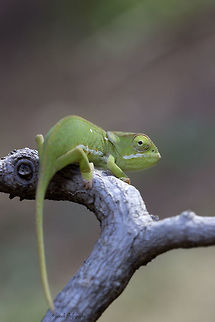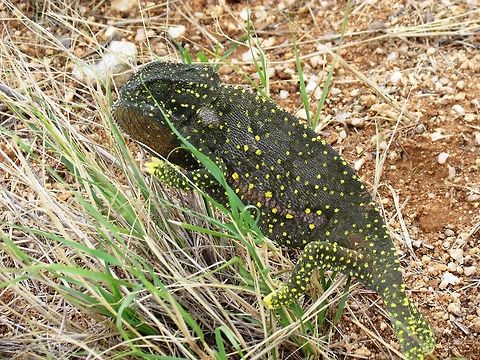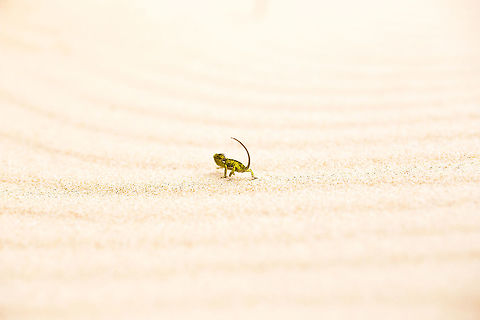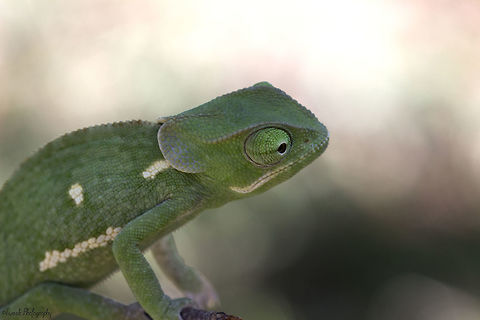
Appearance
This species is a large chameleon, reaching 35 cm . Colouring ranges through various shades of green, yellow, and brown. There is usually a pale stripe on the lower flanks and one to three pale patches higher on the flanks.
Distribution
This species has a very wide distribution, occurring throughout much of sub-Saharan Africa from as far north as Ethiopia and Somalia to a western extreme of Cameroon, and as far south as northern South Africa. It inhabits coastal forest, moist or dry savannah, woodland and bushy grasslands, and may also venture into rural and suburban areas.
Status
The flap-necked chameleon is in heavy demand for the international pet trade, being the third most highly traded chameleon species. More than 111,000 individuals were exported between 1977 and 2011, mostly to the USA. No detrimental effects on the total population size have been observed so far, although more in-depth studies have been recommended. The species is currently classified as Least Concern by the IUCN.
Habitat
This species has a very wide distribution, occurring throughout much of sub-Saharan Africa from as far north as Ethiopia and Somalia to a western extreme of Cameroon, and as far south as northern South Africa. It inhabits coastal forest, moist or dry savannah, woodland and bushy grasslands, and may also venture into rural and suburban areas.The flap-necked chameleon lays 10-40 eggs in a hole dug in soil, which take 10–12 months to hatch. Food includes a variety of invertebrates, although large individuals may take geckos and other chameleons. The species is itself commonly preyed on by snakes such as the boomslang and the twig snake.References:
Some text fragments are auto parsed from Wikipedia.